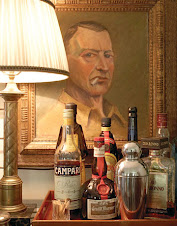
"Anish Kapoor's Memory Headed to New York's Guggenheim
Made of Cor-Ten steel, a new material for the artist, Memory measures a staggering 48 feet by 29 by 15.
Nicholas Tamarin -- Interior Design, 10/15/2009
Anish Kapoor Memory Guggenheim
“Memory” by Anish Kapoor, Cor-Ten steel, commissioned by Deutsche Bank in consultation with the Solomon R. Guggenheim Foundation for the Deutsche Guggenheim, Berlin Installation; Photo: Mathias Schormann © The Solomon R. Guggenheim Foundation
Having already conquered Chicago's Millennium Park and New York's Rockefeller Center, Anish Kapoor is turning his unique gaze toward the latter city's Guggenheim Museum, where his massive Memory sculpture debuts October 21.
On view through March 28 as part of the 50th anniversary of the Frank Lloyd Wright-designed museum, Memory is the first collaboration between the Guggenheim Foundation and the India-born, London-based artist. It comes to the city following a previous outing at Deutsche Guggenheim in Berlin.
Anish Kapoor Memory Guggenheim
“Memory” by Anish Kapoor, Cor-Ten steel, commissioned by Deutsche Bank in consultation with the Solomon R. Guggenheim Foundation for the Deutsche Guggenheim, Berlin Installation; Photo: Mathias Schormann © The Solomon R. Guggenheim Foundation
Working with Cor-Ten steel for the first time in his career, Kapoor formed a 24-ton, gallery-filling sculpture that measures 48 feet by 29 by 15, the scale and proportion complementing -- and perhaps challenging -- Lloyd's architectural masterpiece.
The work, so named for the processional manner in which it's viewed, can never be seen in its entirety. It divides the gallery space into several distinct viewing areas, including the museum's ramps, elevator banks, and an adjacent gallery.
Anish Kapoor Memory Guggenheim
Computer-generated image of “Memory” installed at the Solomon R. Guggenheim Museum; Image courtesy of Aerotrope Limited
Yet each vantage point offers only a glimpse of either the sculpture's exterior form or its interior shell, consisting of seamless 1/3-inch-thick steel tiles, only viewable through a 6 ½ wide aperture, which ensure absolute darkness inside. By viewing it in fragments, visitors are asked to connect and construct the images of Memory retained in their minds. Kapoor calls this process of increased exertion and effort in viewing art "mental sculpture."
AND AT THE TATE MODERN
Miroslaw Balka’s box of darkness is disturbing in its historical echoes but beautiful as well. The Times, "Miroslaw Balka's black hole at Tate Modern is terrifying, awe-inspiring and throught-provoking. It embraces you with a velvet chill."
The Guardian: "The latest commission in The Unilever Series, How It Is by Polish artist Miroslaw Balka, is a giant grey steel structure holding a vast dark chamber, which in its construction reflects the surrounding architecture of Tate Modern – almost as if the interior space of the Turbine Hall has been turned inside out. Hovering somewhere between sculpture and architecture, it sits on two-metre stilts and stands thirteen metres high and thirty metres long. Visitors can walk underneath it, listening to the echoing sound of footsteps on steel above, or enter via a ramp into its pitch-black interior."
Video of the installation here.
How It Is alludes to recent Polish history – for example, the ramp at the entrance to the Ghetto in Warsaw, or the trucks which took Jews away to the camps of Treblinka or Auschwitz. By entering the dark space, visitors place considerable trust in the organisation, something akin to the risks often taken by immigrants travelling. Balka intends to provide an experience for visitors which is both personal and collective, creating a range of sensory and emotional experiences through sound, contrasting light and shade, individual experience and awareness of others, perhaps provoking feelings of apprehension, excitement or intrigue."
Adaptive reuse: Chateau of the Hertford British Hospital
-
Buildings with specific uses often find themselves out of a job so to
speak. Rather than tear down (often wonderful) old buildings, rehabbing
them is the...
5 months ago

















1 comment:
I really am a very dull boy. Give me C18th pictures or furniture any day and you've got my immediate attention. I saw a newsclip about the Tate Modern installation last night, and thought I'm more likely to take holy orders than be thrilled by it. Call me old fashioned!
Post a Comment